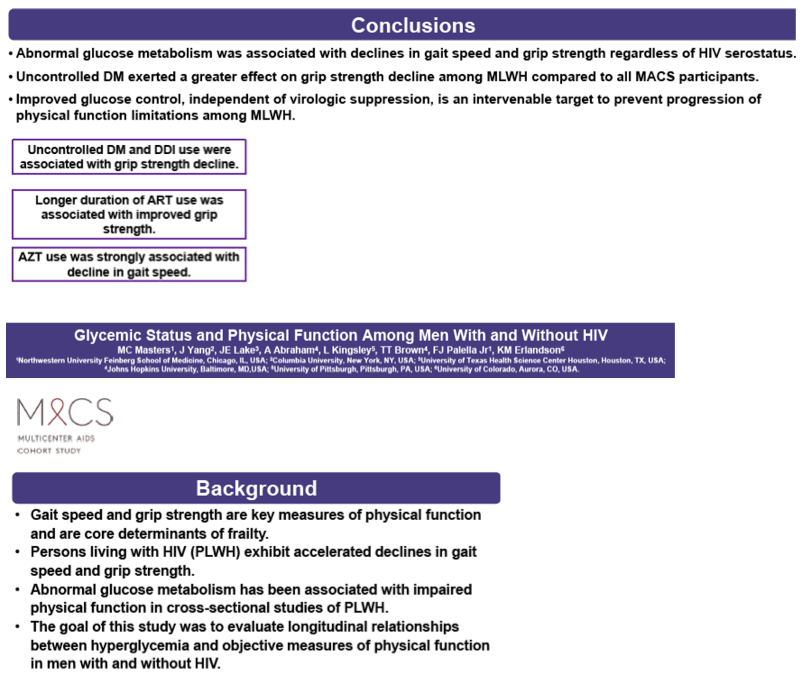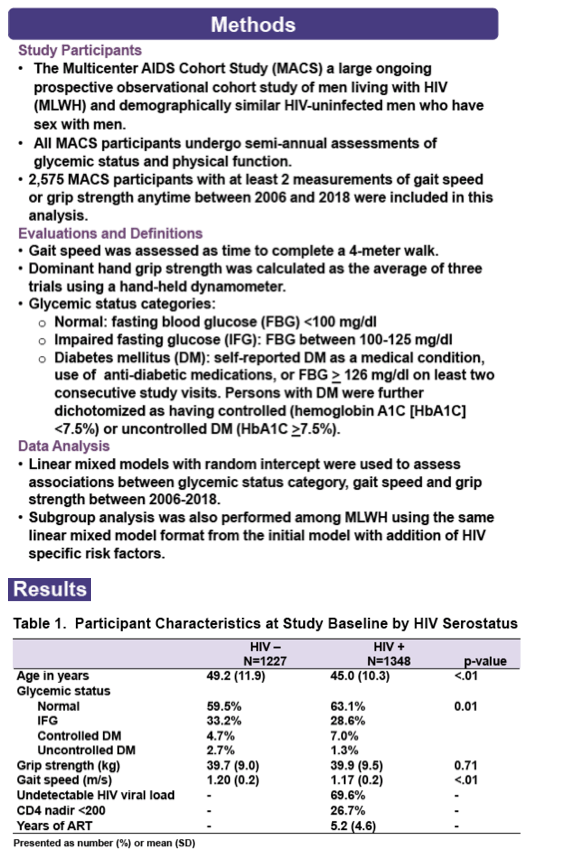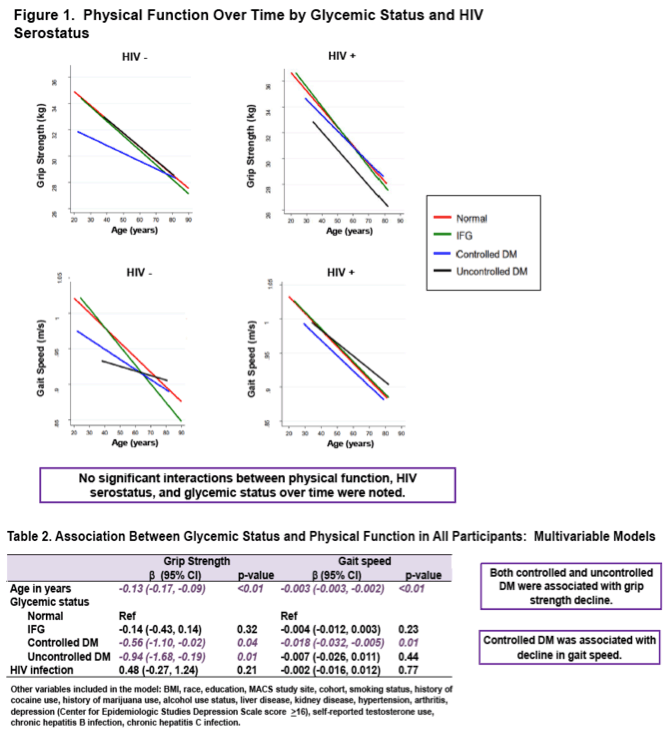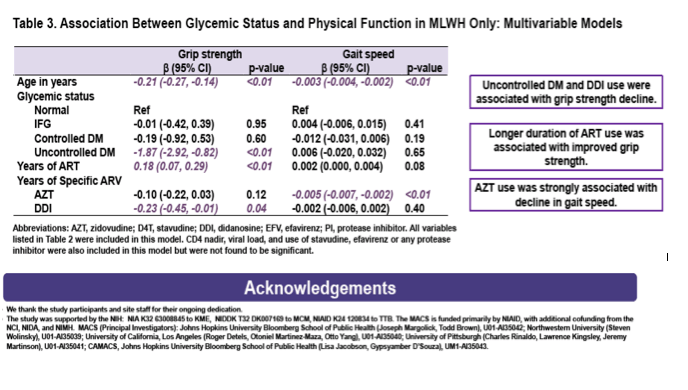 |
 |
 |
| |
Glucose Upsets Tied to Worse Physical Function in Men With or Without HIV
|
| |
| |
"Glycemic status and physical function among men with and without HIV "
CROI 2020, March 8-11, 2020, Boston
Mark Mascolini
Abnormal glucose metabolism raised chances of slow gait speed and weak grip strength in HIV-positive and negative men in the Multicenter AIDS Cohort Study (MACS) [1]. Uncontrolled diabetes independently lowered grip strength in men with HIV regardless of viral load control. The study tied longer time taking antiretroviral therapy to stronger grip strength.
Compared with the general population, people with HIV infection have faster drops in gait speed and grip strength--two components of a standard frailty assessment. Although cross-sectional studies tie abnormal glucose metabolism to impaired physical function in people with HIV, this new MACS analysis set out to assess the impact of high glucose on physical function over time in MACS men with or without HIV.
MACS is an ongoing observational study of men who have sex with men (MSM) with HIV or at risk for HIV infection. Their twice-yearly study visits include measurements of glucose and physical function. This analysis included 2575 MACS men with at least 2 measurements of gait speed or grip strength in 2006-2018. Researchers categorized glucose status as (1) normal (fasting glucose below 100 mg/dL), (2) impaired (fasting glucose 100 to 125 mg/dL), or (3) diabetes mellitus (fasting glucose above 125 mg/dL on consecutive study visits or self-reported use of diabetes medications). Researchers used linear mixed models to explore associations between glucose status, gait speed, and grip strength. These models considered a wide array of variables, including race, body mass index, substance use, kidney disease, hypertension, arthritis, depression, lowest-ever CD4 count, and viral load.
The analysis included 1348 men with HIV and 1227 HIV-negative men. The HIV group was significantly younger (average 45.0 versus 49.2, P < 0.01), had a higher proportion with normal glucose (63.1% versus 59.5%) and lower proportions with impaired fasting glucose (28.6% versus 33.2%) or uncontrolled diabetes (1.3% versus 2.7%) (P = 0.01). Grip strength was similar in men with and without HIV, while gait speed was significantly slower in the HIV group (1.17 versus 1.20 meters/second, P < 0.01). Men with HIV averaged 5.2 years on antiretroviral therapy, and 70% had an undetectable viral load.
The MACS team found no significant interactions between HIV status, physical function (grip strength or gait speed), and glucose status over time. A multivariable model including all MACS men linked older age but not HIV infection to weaker grip strength (beta -0.13, 95% confidence interval [CI] -0.17 to -0.09, P < 0.01) and slower gait speed (beta -0.003, 95% CI -0.003 to -0.002, P < 0.01). This analysis tied both controlled and uncontrolled diabetes to lower grip strength, while controlled diabetes was associated with slower gait speed (beta -0.018, 95% CI -0.032 to -0.005, P = 0.01).
An analysis focused only on men with HIV confirmed the association between older age and worse grip strength or gait speed. Among glucose variables, only uncontrolled diabetes predicted a worse physical function variable--weaker grip strength (beta -1.87, 95% CI -2.92 to -0.82, P < 0.01). This analysis linked longer antiretroviral therapy duration to improved grip strength (beta 0.18, 95% CI 0.07 to 0.29, P < 0.01) and had a marginal association with faster gait speed (beta 0.002, 95% CI 0.000 to 0.004, P = 0.08). Longer time taking zidovudine (AZT) was tied to slower gait speed, and longer time taking didanosine (ddI) was tied to weaker grip strength.
The MACS researchers concluded that "improved glucose control, independent of virologic suppression, is an intervenable target to prevent progression of physical function limitations among men living with HIV."
References
1. Masters MC, Yang J, Lake JE, et al. Glycemic status and physical function among men with and without HIV. Conference on Retroviruses and Opportunistic Infections (CROI). March 8-11, 2020. Boston. Abstract 683.




|
| |
|
 |
 |
|
|